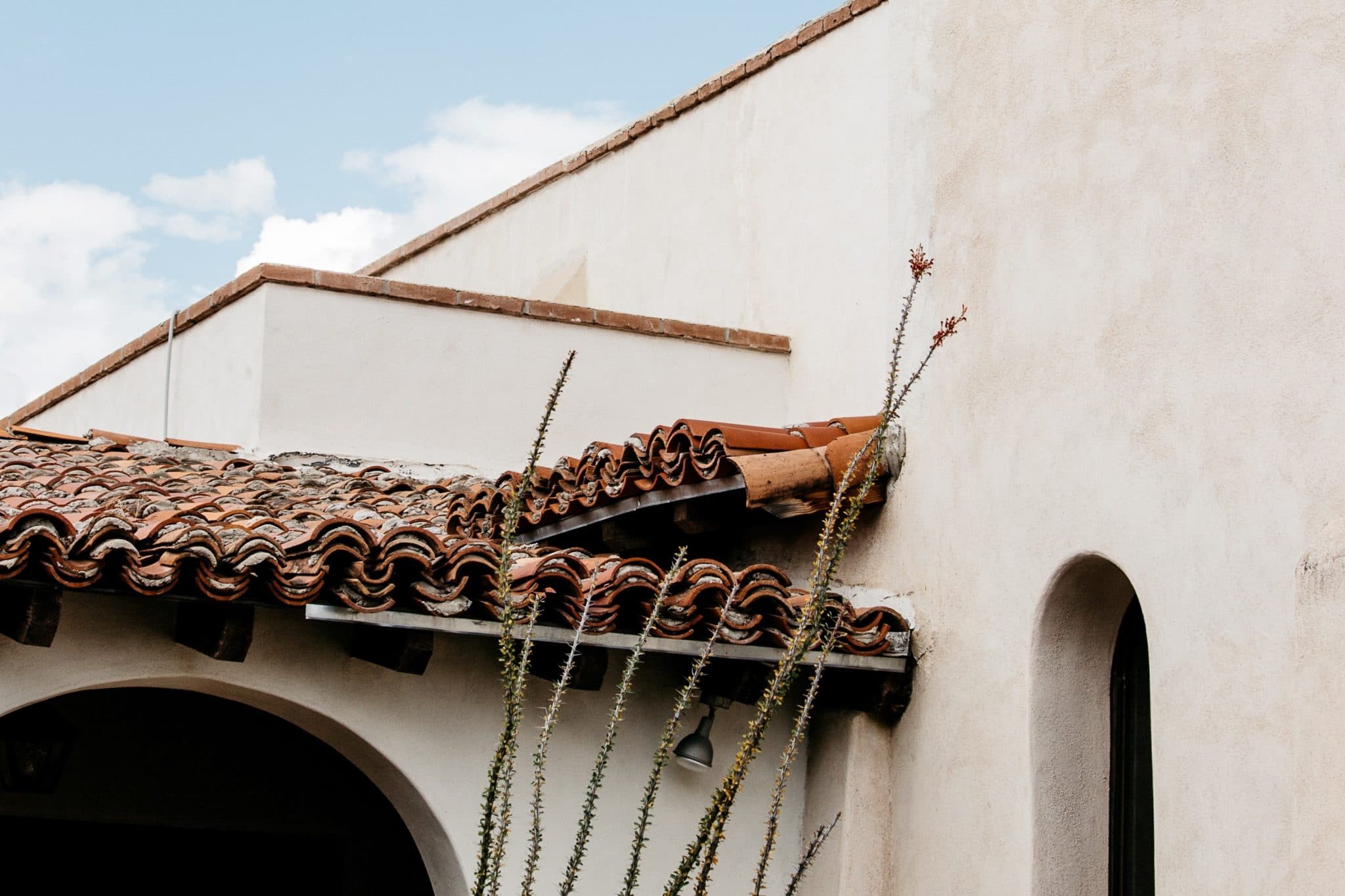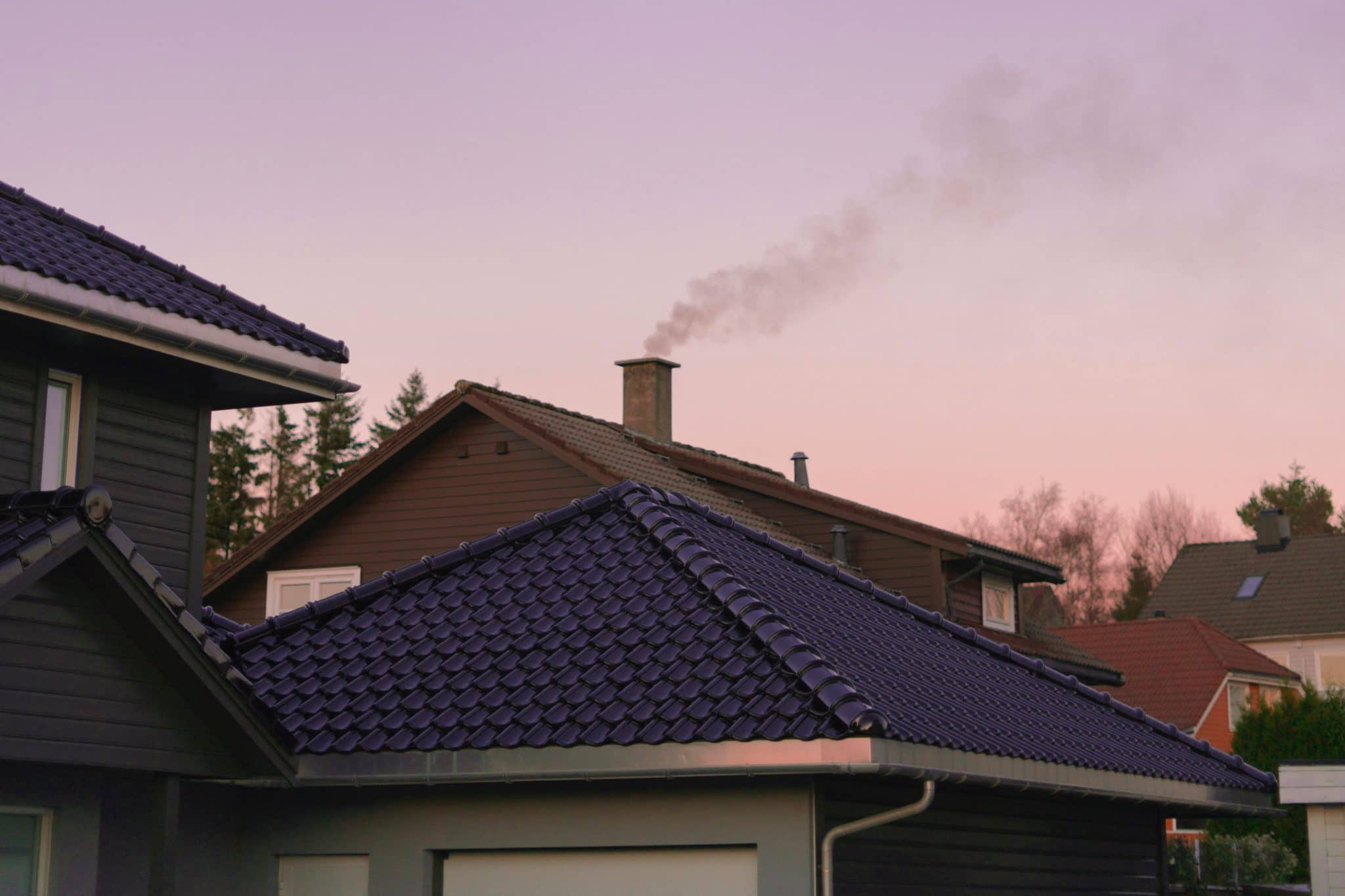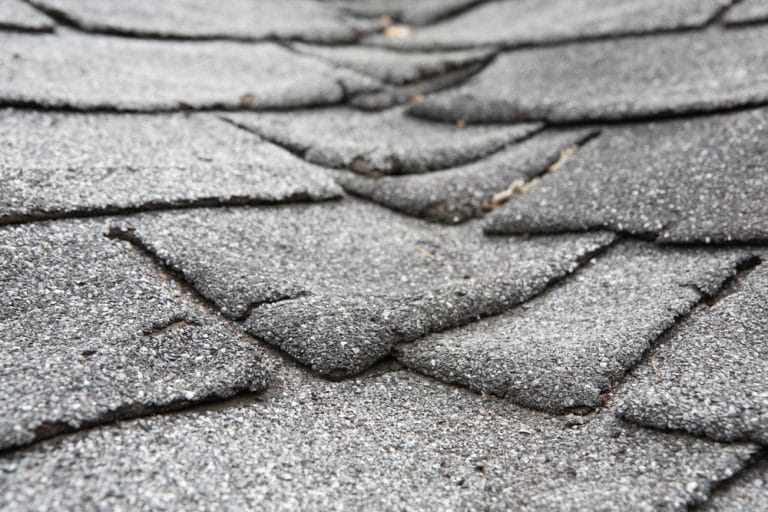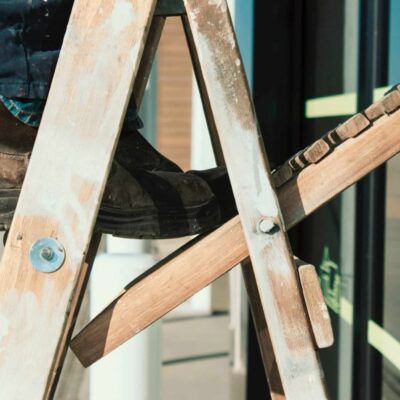Roof Inspection Safety and Risk: The FAQs
By Alyssa Cink
Last Updated January 19, 2024
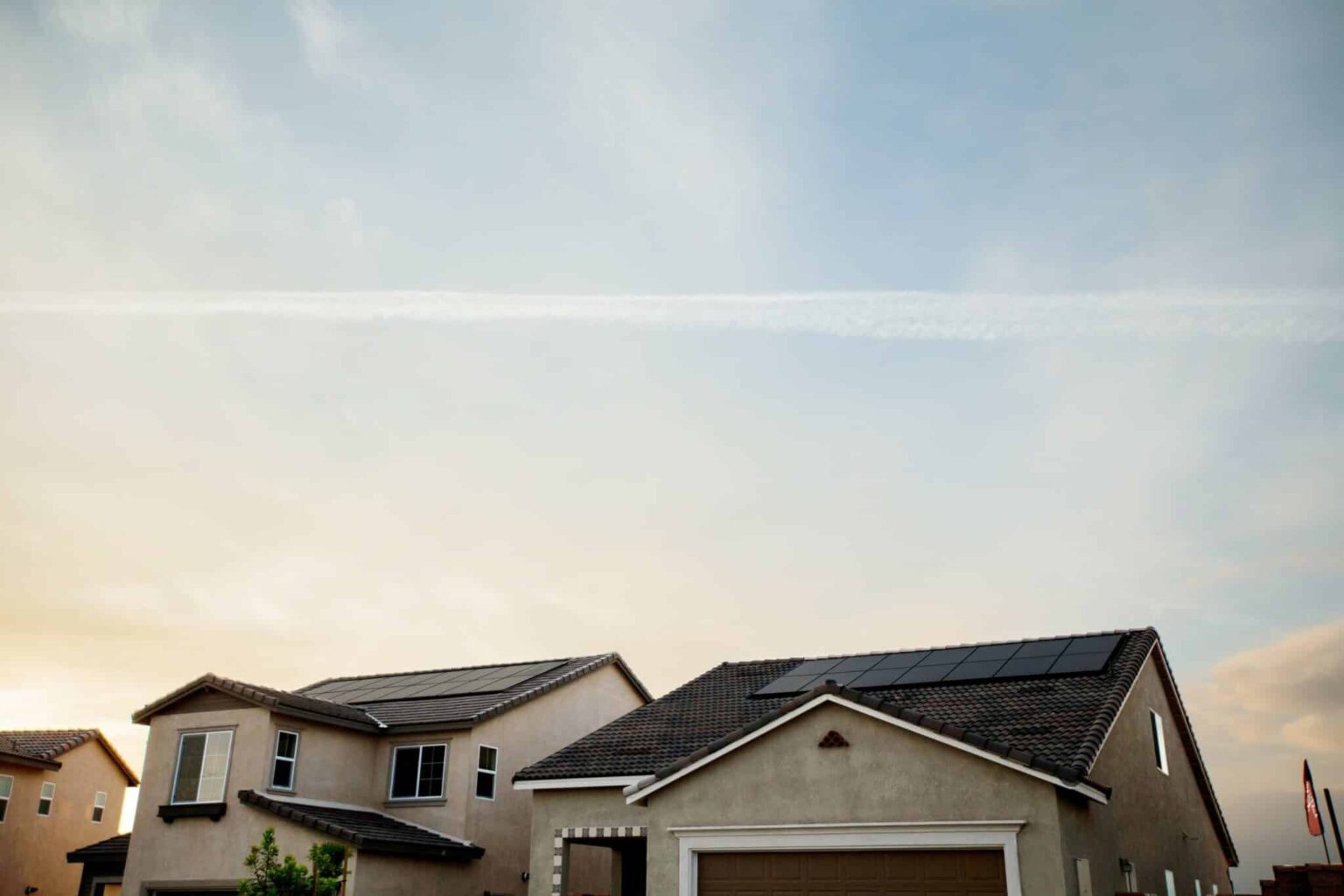
How many of us take for granted the roofs over our heads?
Perhaps more than we’d like to admit. But a strong, dependable roof is everything. That’s why the saying “a roof over your head” stands for safety, security, and shelter. We trust it to keep us warm and dry from rain, snow, and wind. It offers relief from the scorching sun. For as long as humans have been building homes, we’ve known that a stable roof can mean the difference between comfort and displacement.
To the average resident, the roof is a system shrouded in mystery. A blog article by Mountains to Sea Inspections in North Carolina stated that, because buyers, sellers, realtors, and even current residents rarely see or traverse the roof, it creates more anxiety than other parts of the home.
You might inspect the roof as part of a general home inspection, or as a separate service. Some clients need a roof inspection to qualify for mortgages or home insurance policies. Others solicit roof inspections to plan for future repairs.
By performing a roof inspection, your job is to shed light on visible issues that might impact its condition, safety, and longevity for future residents. Roof inspections are an incredible resource for helping people protect their investments. Still, as their home inspector, who’s protecting you?
To help inspectors like you finetune their risk management tactics, we’re answering common roof inspection questions.
Questions and Answers

1. Before the Roof Inspection: How should I prepare clients?
Home inspectors are generalists. Unless specifically licensed and hired otherwise, you’re unlikely to focus on one, specific system or area. This likely won’t be common knowledge for the average buyer or seller, though. Your clients will want to know: What does a roof inspection include? What exactly are you looking for?
As their home inspector, anticipating their questions and answering them ahead of time is an excellent way to manage your risk. Consider talking to them in-person or over the phone. Include your exclusions, your standards of practice (SOPs), and scope in your pre-inspection agreement. Setting expectations before the inspection might prevent misunderstandings (and, therefore, upset buyers) and claims later.
Lastly, if you have clients on-site while you’re working, advise them not to follow you up the ladder. While this may seem like common sense to you, overenthusiastic buyers, sellers, agents, their kids, or their other relatives may need a reminder about roof inspection safety. Failure to set boundaries around precarious situations, like climbing a ladder, could put yourself and others in danger.
2. Which kind of insurance covers roof-inspection-related claims?
Truthfully, it depends. Roof claims arise from a variety of circumstances, beyond what a single kind of insurance can cover. Therefore, combining multiple will give you the most comprehensive coverage.
To set the stage, let’s start with the most common roof allegations: errors and omission (E&O) claims. If a client accuses you of leaving a roof defect, like improper flashing leading to a leak, out of your report or giving bad advice about the roof, your E&O insurance policy will reduce the costs and stressors of resolving the claim.
Meanwhile, there are plenty of circumstances where E&O won’t cover you. Here are a few examples:
- You or your employee gets injured while traversing a roof on an icy morning. Or, afterward, your employee slips while climbing down the ladder from the roof. In either case, you’ll need workers’ compensation insurance.
- A third party, like the current resident, the client, or a client’s relative, gets injured from an accident tied to your inspection. This is where general liability (GL) coverage comes into play.
- The ladder slips out from underneath you. In a panic, you grab the closest handhold, which happens to be the gutter. You’re able to catch your fall, but in the process you pull the gutter down. Damage to the building or other property you don’t own also falls under GL coverage.
- It’s a windy day, and you decide to inspect the roof with a drone instead of walking it yourself. A gust of wind picks up, and, briefly losing control, you fly your drone into a tree. Inland Marine replaces broken or stolen inspection equipment. Remember that if your drone damages someone else’s property in the crash, your GL insurance will handle this—not your drone equipment coverage.
3. Why are E&O roof claims so common?
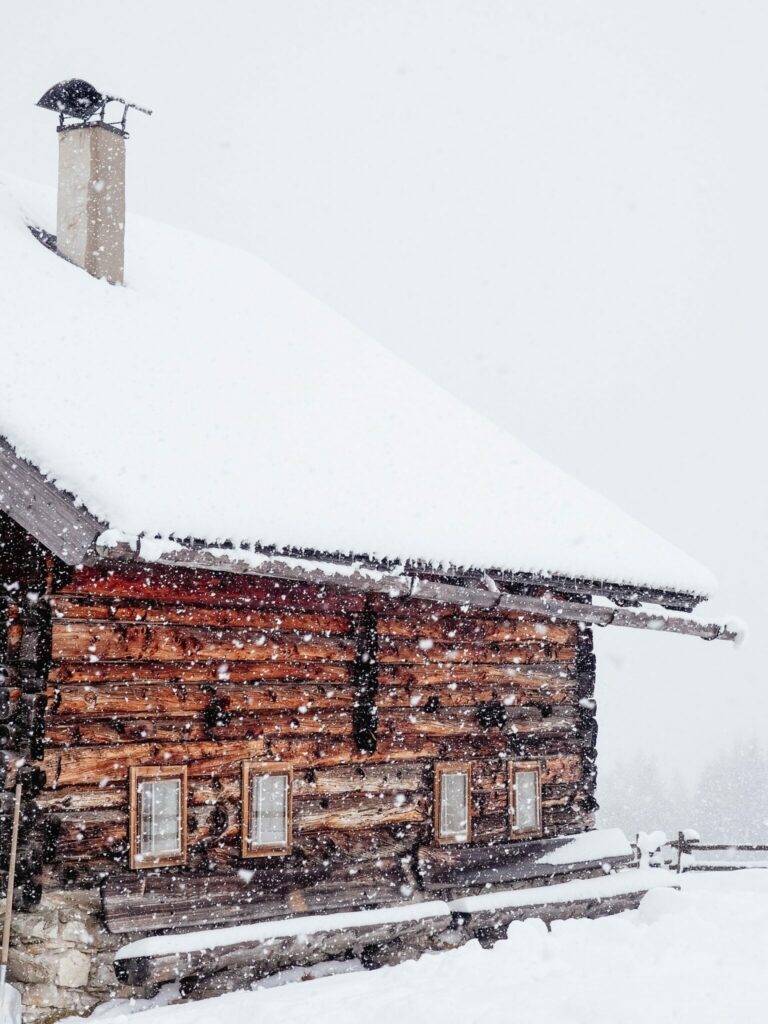
Compared to employee injuries, third-party damages, inspector equipment accidents, and even compared to other E&O accidents, E&O roof claims are a frequent player in the inspection industry. There are a few reasons for this.
First, clients often misunderstand your SOP. They don’t realize that you’re limited to accessible areas and visible defects. They assume they won’t need any roof maintenance or follow-up after they purchase the home. Also, they don’t realize that the conditions you observed on the inspection day can change with the weeks, months, and years that follow. Therefore, if they find a roof defect later, they assume you should’ve been responsible for catching it.
Second, a roof will present different underlying conditions depending on the weather. Ice, wind, gutter debris, and rain may cause moisture penetration that wasn’t present on hot, sunny days. Likewise, leaks are easier to spot on rainy days, and changing weather can determine whether you’re walking the roof, disclaiming it, or inspecting it from the ground. Our “Bad Roof” case study shows how explicitly clients can ignore limitations like these.
Lastly, many roofs require regular maintenance to combat wear and tear. If neglected, this wear and tear can build into costly repairs. Many homeowners delay maintenance until expensive problems, like leaks or mold, have already manifested. It’s a financial and emotional stressor, and they often want someone else to blame. Sadly, you’re the first person they think of.
Because roof claims pop up so frequently, having E&O insurance gives inspectors peace of mind. As long as the roof claim is covered under your policy, your E&O insurer will fight for you—even if you’re at fault! For more information about E&O roof claims, like where commonly occur and how to avoid them, continue reading here.
4. Do apartment or condo roofs carry additional risk?
Apartments and condos are more nuanced than single-family homes. They’re owned, operated, and maintained by different parties. This affects the kinds of spaces you’re responsible for inspecting in each one—and, therefore, how you manage your risk while inspecting them.
In short, if you perform a condo or apartment inspection without verifying which SOP to follow, you’ll likely open yourself up to more liability. You need to know if it falls under a commercial or residential scope, and if shared spaces like roofs are excluded. Learn about the multifaceted risks home inspectors face with multi-family structures like these, and learn how to combat these risks in our article.
5. Are roof inspections dangerous?
How many times have you seen an accident in the news—a car crash, for example—and thought, “That could never happen to me”?
It’s called optimism bias. Among home inspectors, it might manifest in you feeling impervious to accidents like falling from a roof. But, chances are, 80-90 percent of other home inspectors feel the same way, says Richard Osbaldiston, Ph.D. of Eastern Kentucky University.
Home inspectors should remain alert in all scenarios. This especially includes scenarios related to roof inspection safety, like climbing a ladder or walking on a roof. Though you aren’t exactly roofers, census data from the Bureau of Labor Statistics (BLS) reveals that people who work with roofs face almost double the risk of dying in roof accidents. According to SafetyCulture and Don Asher of Allen Law Group, common accidents include:
- Losing your footing and falling off the roof
- Falling from a ladder
- Defective or poorly maintained ladders
- Ladders that are incorrectly set up before climbing
- Failure to wear proper personal protective equipment (PPE)
- Lack of safety training
- Electrical shocks or burns from proximity to power lines
6. What can you do to avoid roof or ladder-related injuries?
- Avoid high risk environments, like steep or snowy roofs.
- Watch out for risky materials, like metal or terracotta.
- Ensure your ladder’s in good condition.
- Wear the right shoes.
- Move slowly and deliberately.
- If you’re worried about it, don’t do it.
Want to learn more? Read our roof safety article, where we break down these precautions in greater detail.
7. If I can’t walk the roof, what other options do I have?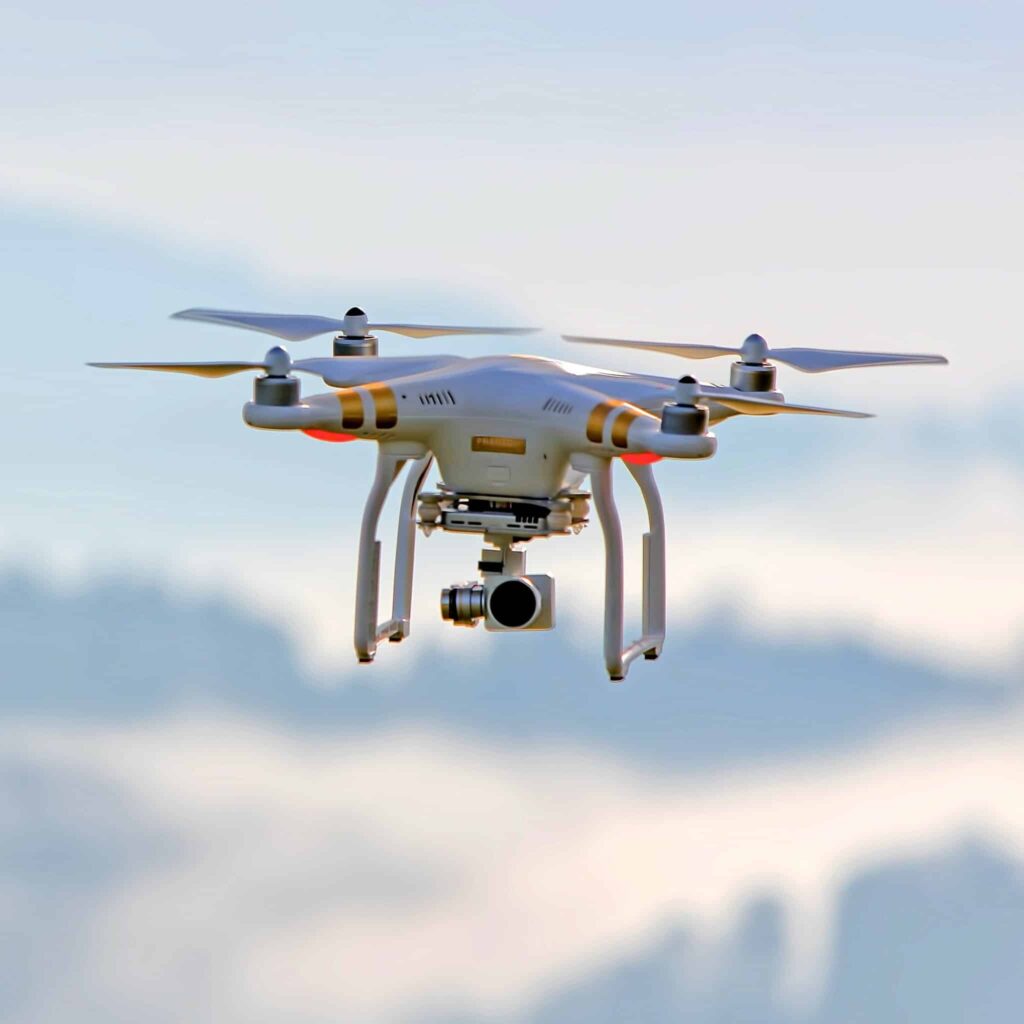
You may have wondered how to perform a roof inspection when it doesn’t feel safe to traverse.
Your SOP will likely require you to report details about the roof, such as its flashings, chimney, and materials. The good news is that most inspectors have some freedom to decide how they’ll do the inspection. Just make sure to describe that method in your report if your SOP mandates it.
Some alternatives include:
8. If I encounter an inaccessible roof, what should I tell my clients?
It’s difficult to tell clients you can’t access roof. You want to help buyers and sellers make informed decisions. Not to mention, you may worry about providing an incomplete service.
Remember, however, that you aren’t a comprehensive inspector. You can’t identify every single defect, nor does your scope require you to. This means you’re bound to have limitations, exclusions, and inaccessible areas.
So, when you someday encounter a roof you can’t walk on, use your report to explain why. Whether you’re skipping the roof or inspecting it from a different angle, like with a drone or binoculars, tell your client why you made that decision and how it impacted your observations.
If snow, for example, hinders your visibility or general ability to climb, take photos of the snow-covered roof and include them in your report. State that you were unable to see the roof’s materials and components due to the snow, and, as a result, there were likely defects or conditions hidden from view during the inspection. Explain how roof inspection safety relates to your SOP. You might offer to come back and inspect the roof after the snow melts. It may also help to call your client later and reiterate the exclusion, just in case they didn’t read the report.
Lastly, an important caveat: Accessible roofs aren’t free of limitations or exclusions. Your pre-inspection agreement should list general limitations outside your scope, like the roof’s antenna. If you suspect the property of being a recent flip, advise your client that some latent, neglected deficiencies may go unobserved. This is especially common for roofs in a flipped home.
It might feel tedious. But informed clients are less likely to misunderstand what your inspection does (or does not) include. This, in turn, makes them less likely to file E&O roof claims.
An Air-Tight Coverage Plan for Roof Inspections
With insurance coverage designed specifically for you and your industry, you can worry less about inspecting a roof for leaks, flying your new drone, or keeping employees safe on ladders and roofs.
At InspectorPro, we know your industry. From our brokers and admins to our claims handling team, we’ve all committed ourselves to protecting you and your business from home inspection clients. We’ve spent more than 10 years tailoring our services, knowledge, and resources to fit your unique risks. Because, at the end of the day, fighting and preventing claims is frustrating enough. Who wants to jump through even more hoops with an insurance provider who has no idea what you’re up against?
Do you have questions about E&O, GL, workers’ comp, or any other kinds of insurance we mentioned in this article? Want clarification about your state’s home inspection insurance requirements, like the standards related to roof inspection safety? Curious to hear how our pre-claims assistance and contracts can knock the socks off your next customer complaint?
Our team of experts can tackle all that and more. We’re happy to walk you through an application or chat with you on the phone, so don’t hesitate to get in touch! Fill out our contact form online or give us a call at 866-916-9419.


